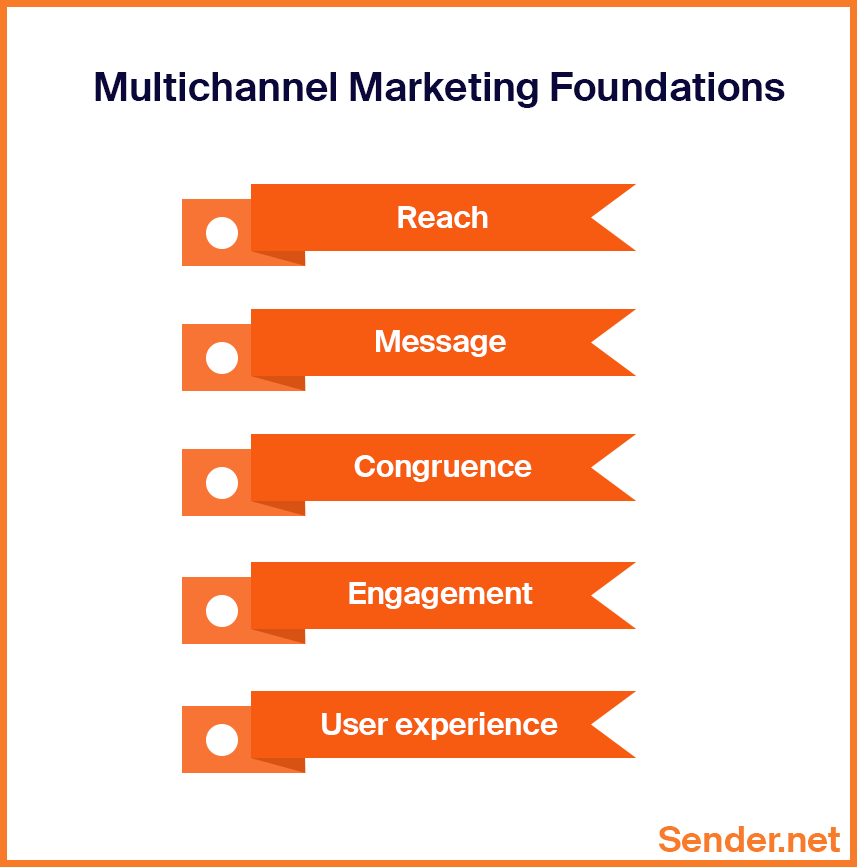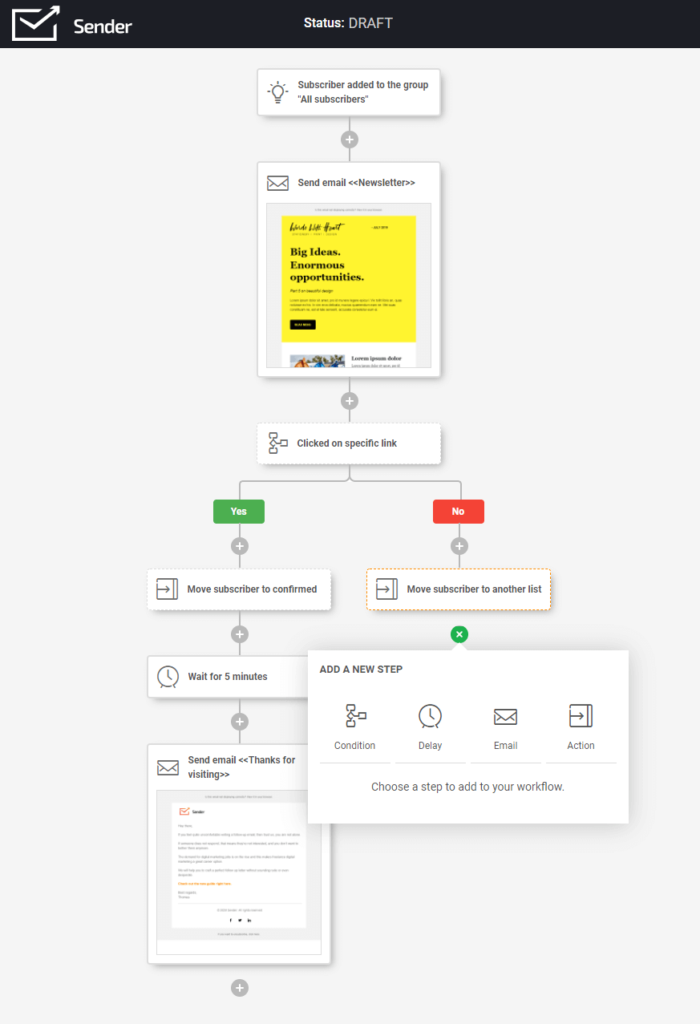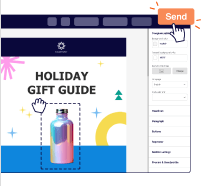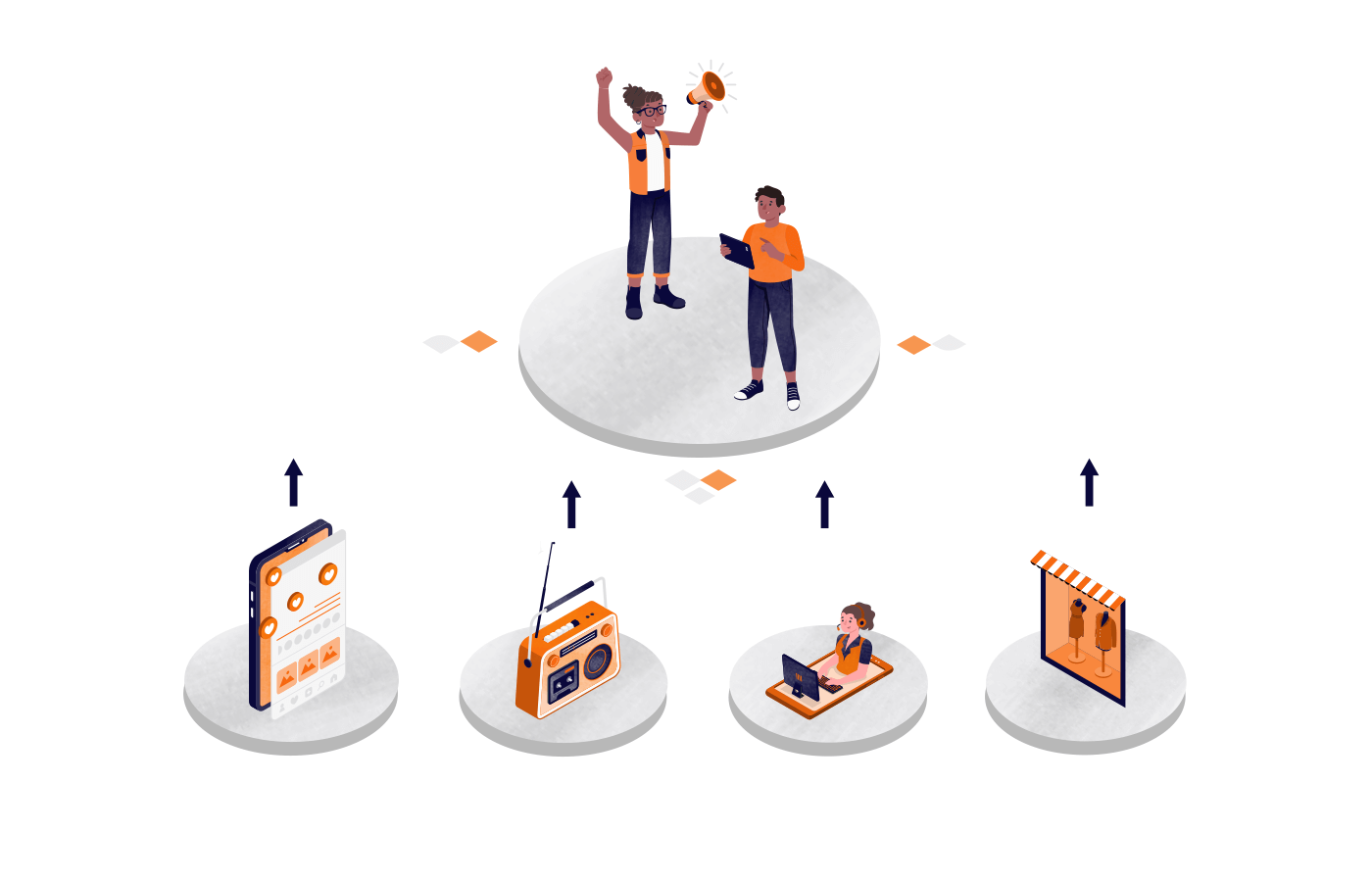Multichannel marketing refers to the practice of interacting with customers through several channels (e.g. website, retail, email, mobile, etc.)
and allowing them to always interact with you through the same channels.
In practice, this often means combining several marketing department strategies into one and always allowing your customer to come to your website in just a few clicks.
The strategy in its entirety, rose to prominence because consumers started to use many different devices at different times for one purchase. Put simply, over time, their user journey became much more complex. Thus, targeting customers through many different channels turned into an extremely effective strategy.
However, it’s a more difficult approach than single channel marketing. You have to collect a lot of data and maintain congruence across all channels in order for multichannel marketing to be effective.
In fact, bad implementations of multichannel marketing may be simply more costly for the same (or even less) effectiveness as a single channel.
Multichannel Marketing Foundations
For any strategy or plan to be effective, you must lay down the proper foundations. As multichannel marketing is so complex, you need to take into account whether your business and your teams are prepared to take on the task.
Additionally, you have to keep in mind that simply being present at all channels is not enough. Multichannel marketing is about maintaining one single narrative (story) across every channel, which means they will be heavily intertwined. As a result, your marketing departments need to be able to work closely together.
If you’re planning on implementing mutlichannel marketing, you should address several key areas to prepare a good foundation:
- Reach. Pick out the channels that have the highest amount of reach (and potential reach). Learn lessons from those and apply them, if applicable, to other channels.
- Message. You have to go through all of your marketing channels and ensure that your message resonates with your target buyer. One of the first steps to doing so is to make sure that the message is the same across all channels.
- Congruence. Everything has to be aligned across channels both internally (i.e. within your departments) and externally (i.e. within the channels themselves).
- Engagement. While all channels are a little different in regard to content distribution and customer engagement, you have to take into account the uniqueness of each channel. For example, try to use social media to build a heavily engaged audience.
- User experience. The strategy assumes that your customers will be interacting with multiple channels. All of these channels should provide an exceptional user experience, otherwise, the rest of the foundations will become shaky.

Getting Multichannel Marketing Right
Foundations are not enough to get you going. They are just the bare necessities before you can start implementing multichannel marketing strategies. To truly prepare for the process, you will need to implement the steps outlined below.
#1 Build Buyer Persona’s
Before you can target anyone specifically with marketing, you must know who is buying your products. It’s doubly as important for B2B businesses, as the sales are usually higher ticket but fewer overall. Failing to capture one lead can put a dent in monthly revenue.
Essentially, building a buyer persona is pretty close to building an ideal customer profile (ICP). We recommend you collect and look over the data on who made the purchasing decision across your clients. You will want to answer questions like:
- What are my clientelle’s demographics (age, gender, location, etc.)?
- What type of companies do my products target (if applicable)?
- What is my client’s role in the company (if applicable)?
- What are my client’s motivations for buying my products?
- What are my customer’s common pain points?
These are just some starting questions. Essentially, you want to build an in-depth profile of your average buyer. Then you adapt the content and marketing strategies accordingly.
#2 Pick Out the Best Channels
If you’re just starting out with multichannel marketing, you likely don’t have the budget to do absolutely every channel in existence effectively. Therefore, you will need to pick out several that will work best.
There are many ways to go about it. You can go back to your buyer persona and think about which channels they should be visiting and using the most. On the other hand, you can take data from the most effective channels you’re currently running and take a selection of those for multichannel marketing.
Then, when budget constraints aren’t as harsh, you can always start experimenting with more channels to find what works and what doesn’t.
#3 Play to The Strengths of the Channel
Let’s say you picked social media and intend to focus on Instagram as one of your primary channels. Social media has a strong focus on visual content. Instagram is even more visual than nearly any other channel.
Regardless of your buyer persona and what you yourself think of social media marketing, if you picked a channel, you have to play by the rules. Posting irrelevant images or attempting text posts (with just a blank image) on Instagram will very likely result in failure.
People come to Instagram to see images and videos. If you don’t give them what they want, the effectiveness of your copy and everything else won’t matter as much. They will simply skip over your content.
#4 Create Consistent Messaging for Each Channel and Persona
Once you have established your own guidelines of who you will be marketing to and where, it’s time to create consistent messaging. Buyer persona’s should be your guiding star as you will be able to gauge accurately what type of content they may like, how frequently, and what you’re looking to solve with your products.
Of course, everything hinges on one requirement – accurate data. If your data quality is low, your predictions about your customers will be inaccurate. Again, that’s not likely to result in much success.
#5 Establish Advanced Analytics
You need as much high-quality data as you can muster. Since your strategy hinges on being able to accurately predict your customers and maintaining internal consistency, accurate and high-quality data is what will bring you success.
It’s highly recommended to implement advanced analytics and tracking software wherever applicable. However, you also should create a data warehouse – a place where all the data arrives once parsed. Keeping marketing data locked within departments (i.e. within data silos) limits the power of your predictions.
#6 Implement Automation
Implementing automation, such as trigger emails, is necessary if you want to use multichannel marketing effectively. Since you’ll be trying to use data from many different sources at once, you won’t have as much time to do things manually.
Anyone who has ever built an email automation sequence knows how quickly confusing it can become. Sender, solves it with an intuitive interface that enables anyone to create robust email automation sequences from scratch.
Here’s the visual representation of the automation sequence on Sender.

Additionally, automation in data collection and delivery will reduce the time needed before the information becomes actionable. In turn, that will allow you to personalize content according to your customer’s journey even more.
Make the Most of Multichannel Marketing
Multichannel marketing is definitely a big investment for any business. However, since users are now moving across many devices and channels before making a buying decision, multichannel marketing has proved to be effective.
Want to ease up on the process and save time on steps 5 & 6? Sender.net has got you covered. Our email marketing platform will allow you to create beautiful emails and automate entire workflows in a few simple clicks. Our solution will also let you easily gather all the data you need about the effectiveness of your email campaigns.
Also read:

